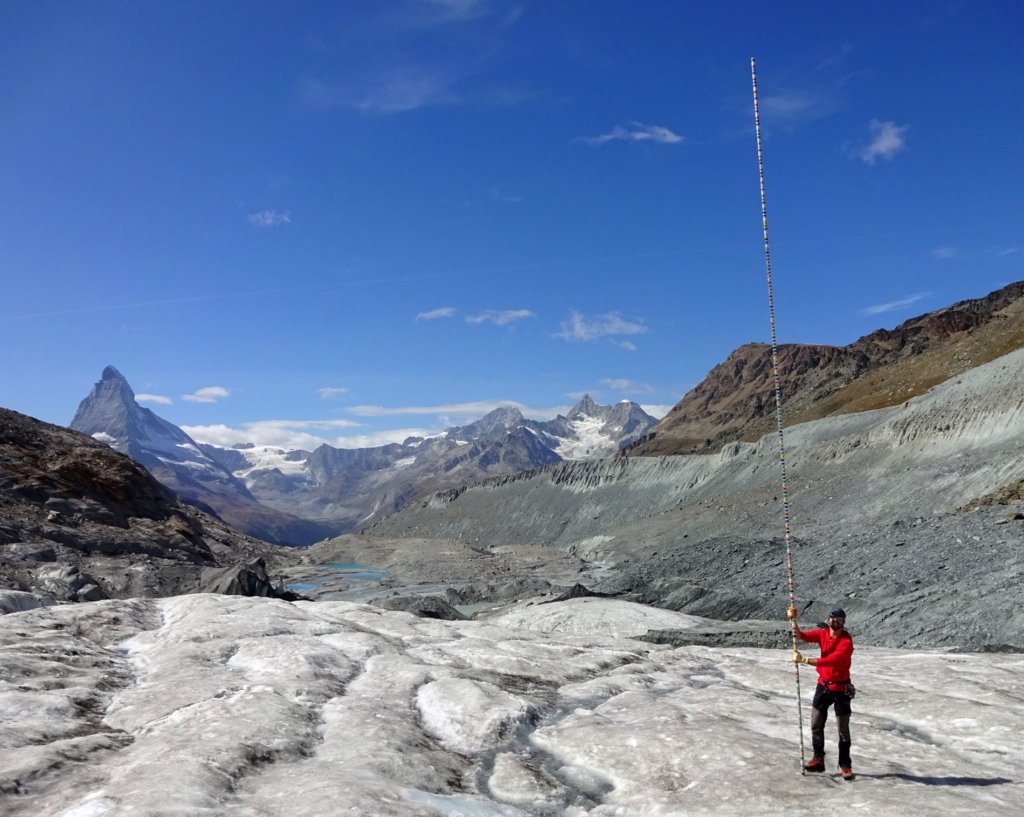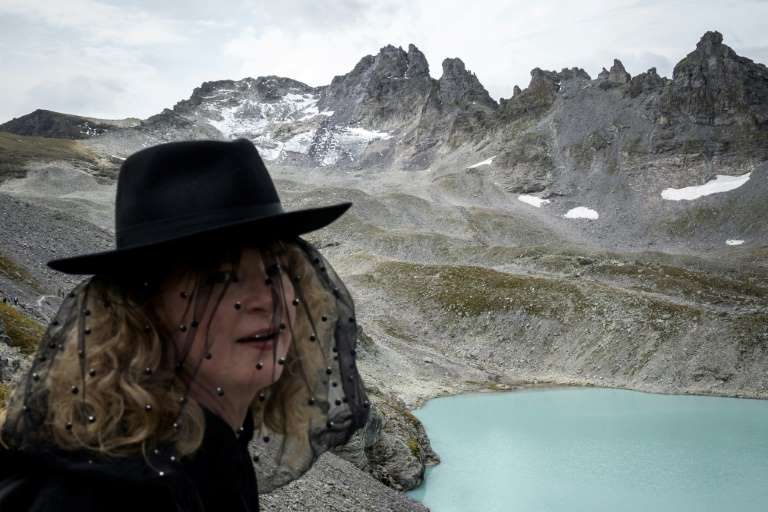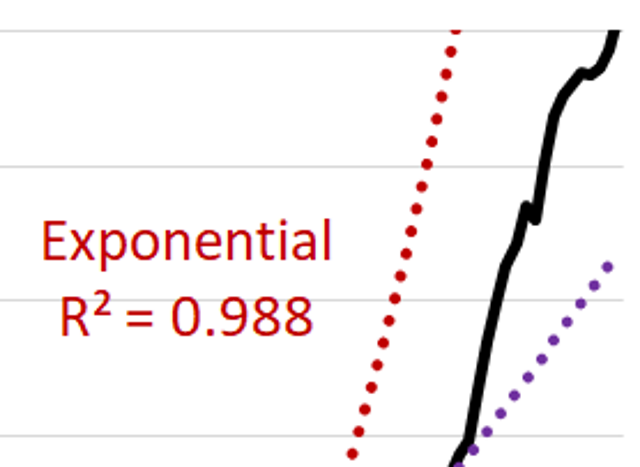Swiss glacier volume reduced by 10 per cent in only five years – More than 500 small glaciers have vanished – Over the past 12 months, two percent of total Swiss glacier volume lost

15 October 2019 (Swiss Academy of Sciences) – During the summer heatwaves of 2019, glacier melt rates reached record levels. This led to another year of major losses of ice volume, as reported by the Cryospheric Commission of the Swiss Academy of Sciences. Switzerland’s glaciers have thus shrunk by 10 per cent over the past five years.
The strong glacier melt which has been underway for some years is continuing. In 2019, once again, glacier ablation (through melting) outpaced accumulation (through snowfall), as indicated by measurements of the mass balance of 20 Swiss glaciers. The situation was, however, less dramatic than in the previous two years. In April and May, snow cover on the glaciers was 20–40 per cent higher than usual. In some places, depths of 6 metres were measured as late as the beginning of June. As the onset of snowmelt was relatively late, it had been hoped – until the arrival of the first summer heatwave – that the loss of glacier volume might be relatively limited this year. But, during the two week-long periods of intense heat at the end of June and the end of July, the volume of snow and ice melting on Swiss glaciers within just 15 days was equivalent to the country’s total annual consumption of drinking water. As a result, the thick snow layer rapidly disappeared, and the strong melt persisted until the beginning of September. This means that, over the past 12 months, around 2 per cent of Switzerland’s total glacier volume has been lost. Altogether, over the past five years, the loss exceeds 10 per cent – a rate of decline never previously observed in the time series extending back for more than a century.
Over 500 small glaciers already vanished
The glacier mass balance data for 2019 show marked regional variations. Particularly in eastern Switzerland and on the northern side of the Alps, losses were higher than the average for the last ten years. A reduction of 1–2 metres in mean ice thickness was measured in many cases (e.g. Silvrettagletscher, Glacier de Tsanfleuron). Conditions were, however, more favourable in the southern Gotthard region, thanks to heavy snowfall at the beginning and end of the winter; several glaciers (e.g. Sankt Annafirn, Ghiacciaio del Basòdino) experienced relatively low mass losses. The retreat of small glaciers continues unabated: more than 500 (generally unnamed) glaciers have already disappeared since around 1900. 2019 saw the removal of the Pizol glacier – one of the first with a long time series – from the monitoring network.

Record winter snowfall in the east
Across Switzerland, the 2018–19 winter was notable for a very cold January with high levels of precipitation, particularly on the northern side of the Alps. Heavy snowfall was recorded, especially in the east. From Liechtenstein across the Prättigau Valley to Davos, many places saw the highest or second-highest amounts of fresh snow ever measured on ten consecutive days (2–3 metres). Many parts of Graubünden had more snow in mid-January than had ever previously been measured at this time of the year. At the end of February, snow depths only remained above average on the main Alpine crest and in the east, while they were well below average on the southern side of the Alps. Overall, the 2018–19 winter season (November–April) was snow-rich. On account of heavy snowfalls in December and April, above-average to well-above-average snow depths were recorded at mid and high altitudes along the main Alpine crest, in Valais, in the eastern parts of the northern Alpine slopes and in Graubünden.
Cool start to the summer
May was substantially cooler than usual throughout the country: MeteoSwiss reports that it was the coldest May since 1991. Accordingly, snow fell in a few cases even in lowland regions, while snow depths continued to increase in the high mountains. Combined with the large amounts of winter snow, the snow depths which had accumulated at high altitudes by the end of May were two to three times higher than the multi-year average. In the course of the second-warmest June ever recorded and a likewise hot month of July, this snow melted extremely rapidly, so that many places became snow‑free only slightly later than usual. The summer of 2019 (June-August) was the third warmest since the start of measurements. But in 2019, unlike in the hot summer of 2018, most regions had sufficient precipitation. Because of the intense heat, summer snowfalls were only recorded at altitudes above 3000 metres. In the first half of September, however, snow fell in some cases at altitudes below 2000 metres.


